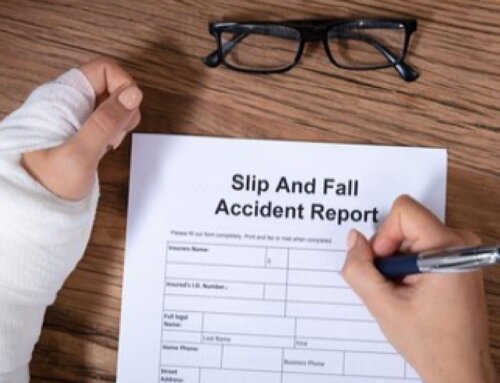Judges who decide what a personal injury claim is worth at court and solicitors who advise clients on whether to settle a case before it goes to court do so by using a mixture of tools at their disposal to help them decide on the value of a claim.
The Judicial College Guidelines for the Assessment of General Damages in Personal injury Cases is a small book that runs to less than ninety pages. It is one of the tools that lawyers pick up to help them decide what an injury claim is worth.
Updated versions of the book are published every few years. The latest edition was published at the end of April 2022.
The book’s headline refers to ‘ the assessment of general damages’, so before going further, it’s worth looking at what is meant by ‘general damages’.
What are general damages in personal injury claims?
The term ‘general damages’ refers to compensation awarded for the injury suffered by an individual. However, it is more than that because as well as compensating an accident victim for the pain and suffering they endure, general damages compensate them for loss of amenity.
The simplest definition of loss of amenity is to say it is the loss of ability to do certain things, e.g. to play football, go walking, study, or socialise.
What is in the Judicial College Guidelines that makes them so helpful in valuing general damages in a personal injury claim?
The latest edition of the Guidelines has fourteen chapters, each devoted to a group of related injuries. For example, the chapter headed ‘Orthopaedic Injuries’, lists each kind of orthopaedic injury (with ‘orthopaedic’ referring to injuries to bones, muscles, joints, tendons, ligaments, and muscles) as follows:
- Neck Injuries
- Back Injuries
- Shoulder Injuries
- Pelvis and Hip injuries
- Arm Amputations
- Other Arm Injuries
- Injuries to the elbows
- Wrist Injuries
- Hand Injuries
- Leg Injuries
- Knee injuries
- Ankle injuries
- Achilles Tendon injuries Foot injuries
- Toe Injuries
Each separate orthopaedic injury has a section of its own, setting out a guideline figure for general damages based on the severity of the injury. As an example, the table below illustrates the types of damages that apply to severe back injuries:
| (A) Severe
|
|
| (i) Most severe from | £91,090 to £160,980 |
| (II) Cases with special features | £74,160 to £88,430 |
| (III) Cases of disc lesions, fractures, soft tissue injuries leading to chronic conditions | £38,750 to £69,370 |
( The book explains the factors required to define each grade of severity in greater detail than are contained in our example.)
So, staying back with back injuries as an example, the section goes on to provide guideline compensation figures for moderate back injuries and minor back injuries, with each sub-section again broken down into degrees of severity, and the appropriate guideline valuations in each case.
Each injury section is set out in the same way. The book covers a broad range of injuries, with chapters on:
- Injuries resulting in death
- Injuries involving paralysis
- Brain and head injury
- Psychiatric and psychological Damage
- Injuries affecting the senses
- Injuries to internal organs
- Orthopaedic injuries
- Work-related limb disorders
- Chronic pain
- Facial injuries
- Scarring to other parts of the body
- Damage to hair
- Dermatitis and other skin conditions
- Minor injuries
In most cases, the value of an injury is expressed not as a single amount but as falling within a range, e.g. Back Injuries – Most Severe – £91,090 to £160,980. The Guidelines provide a range of valuations because no two injury cases can ever be precisely the same. A working party of experienced lawyers decides the valuations of general damages be included in the Guidelines and these figures are based on the decisions from previously decided cases that have ended up in court. Rarely will two similar court cases result in the same amount of damages being awarded.
The overriding principle of the Guidelines is that they are just that, guidelines and are an aid to working out the valuation of a claim.
Rarely is a personal injury claim pursued only for general damages for pain, suffering and loss of amenity (PSLA). In cases involving catastrophic injuries, the award for PSLA may often seem somewhat dwarfed by the associated claims for future care costs, adaptions to the home of the injured person, loss of earnings, and both past and future and other related damages.
To find out more about the multiple types of damages that can make up a personal injury claim see our blog ‘What is the typical payout for personal injury in the UK?
Mooneerams are experienced, personal injury solicitors.
Most of the claims we handle are funded on a no win, no fee basis.
Call Mooneerams now on 029 2048 3615 if you have been injured in an accident that was not your fault and you would like advice on how to start a claim.
You can also contact us by putting your details in the designated box on the right-hand side of this page and clicking the ‘Start Your Claim’ button.
Find out more about all the factors involved in valuing an injury claim in our blog, ‘How much is the average personal injury settlement worth?’)









